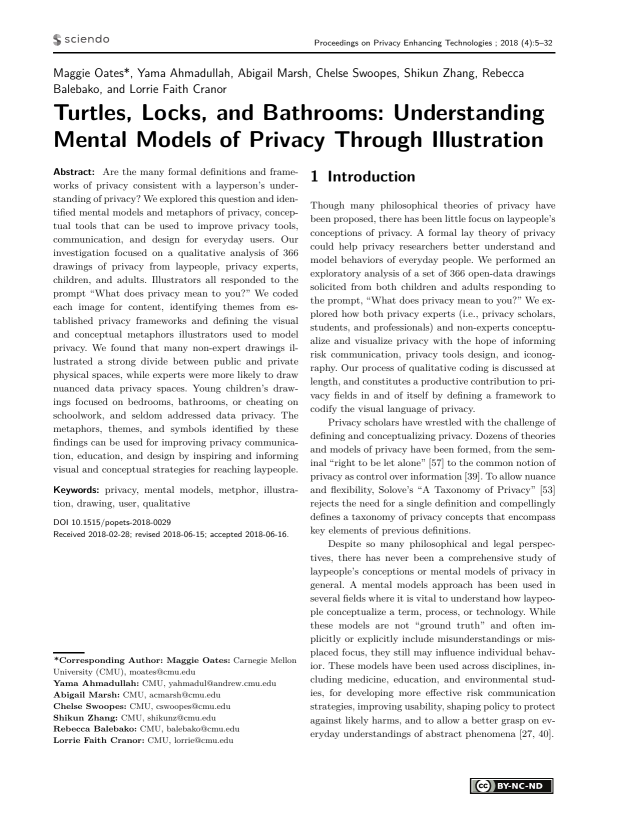Turtles, Locks, and Bathrooms: Understanding Mental Models of Privacy Through Illustration
Authors: Maggie Oates (Carnegie Mellon University (CMU)), Yama Ahmadullah (CMU), Abigail Marsh (CMU), Chelse Swoopes (CMU), Shikun Zhang (CMU), Rebecca Balebako (CMU), Lorrie Faith Cranor (CMU)
Volume: 2018
Issue: 4
Pages: 5–32
DOI: https://doi.org/10.1515/popets-2018-0029
Abstract: Are the many formal definitions and frameworks of privacy consistent with a layperson’s understanding of privacy? We explored this question and identified mental models and metaphors of privacy, conceptual tools that can be used to improve privacy tools, communication, and design for everyday users. Our investigation focused on a qualitative analysis of 366 drawings of privacy from laypeople, privacy experts, children, and adults. Illustrators all responded to the prompt “What does privacy mean to you?” We coded each image for content, identifying themes from established privacy frameworks and defining the visual and conceptual metaphors illustrators used to model privacy. We found that many non-expert drawings illustrated a strong divide between public and private physical spaces, while experts were more likely to draw nuanced data privacy spaces. Young children’s drawings focused on bedrooms, bathrooms, or cheating on schoolwork, and seldom addressed data privacy. The metaphors, themes, and symbols identified by these findings can be used for improving privacy communication, education, and design by inspiring and informing visual and conceptual strategies for reaching laypeople.
Keywords: privacy, mental models, metphor, illustration, drawing, user, qualitative
Copyright in PoPETs articles are held by their authors. This article is published under a Creative Commons Attribution-NonCommercial-NoDerivs 3.0 license.

